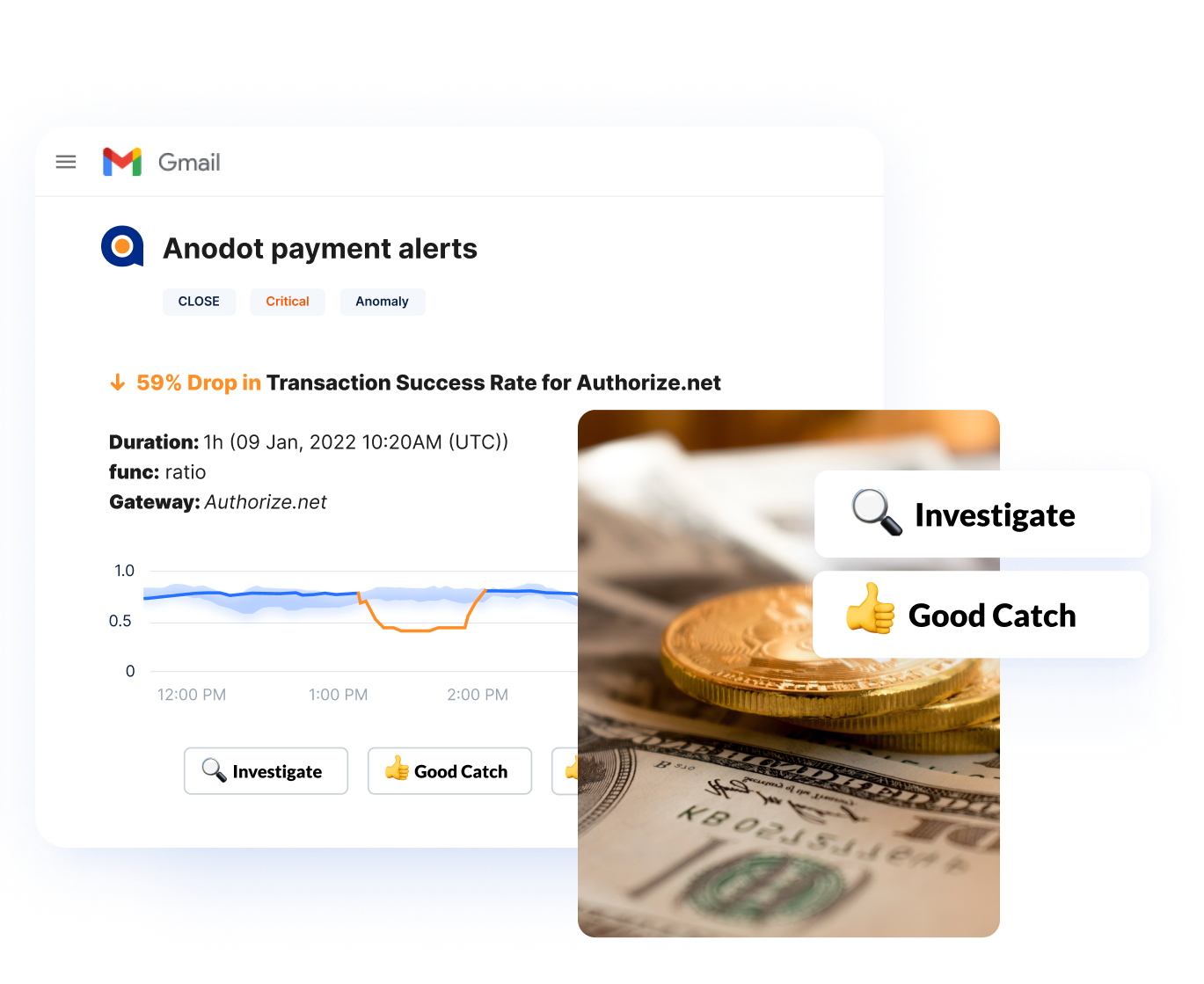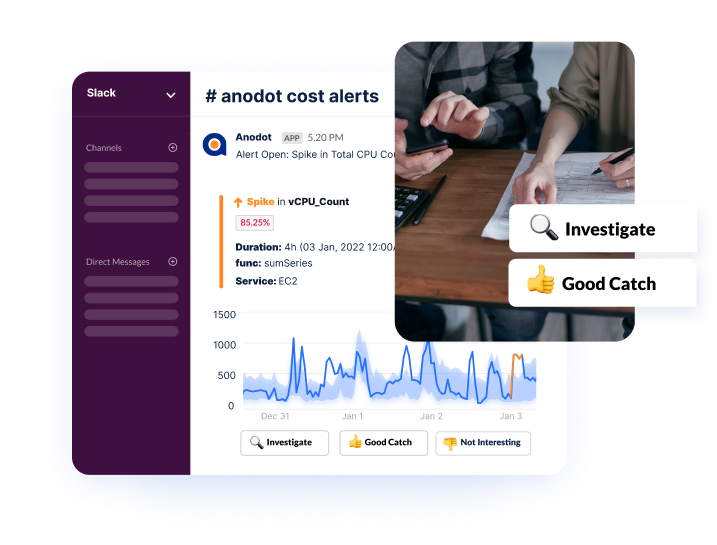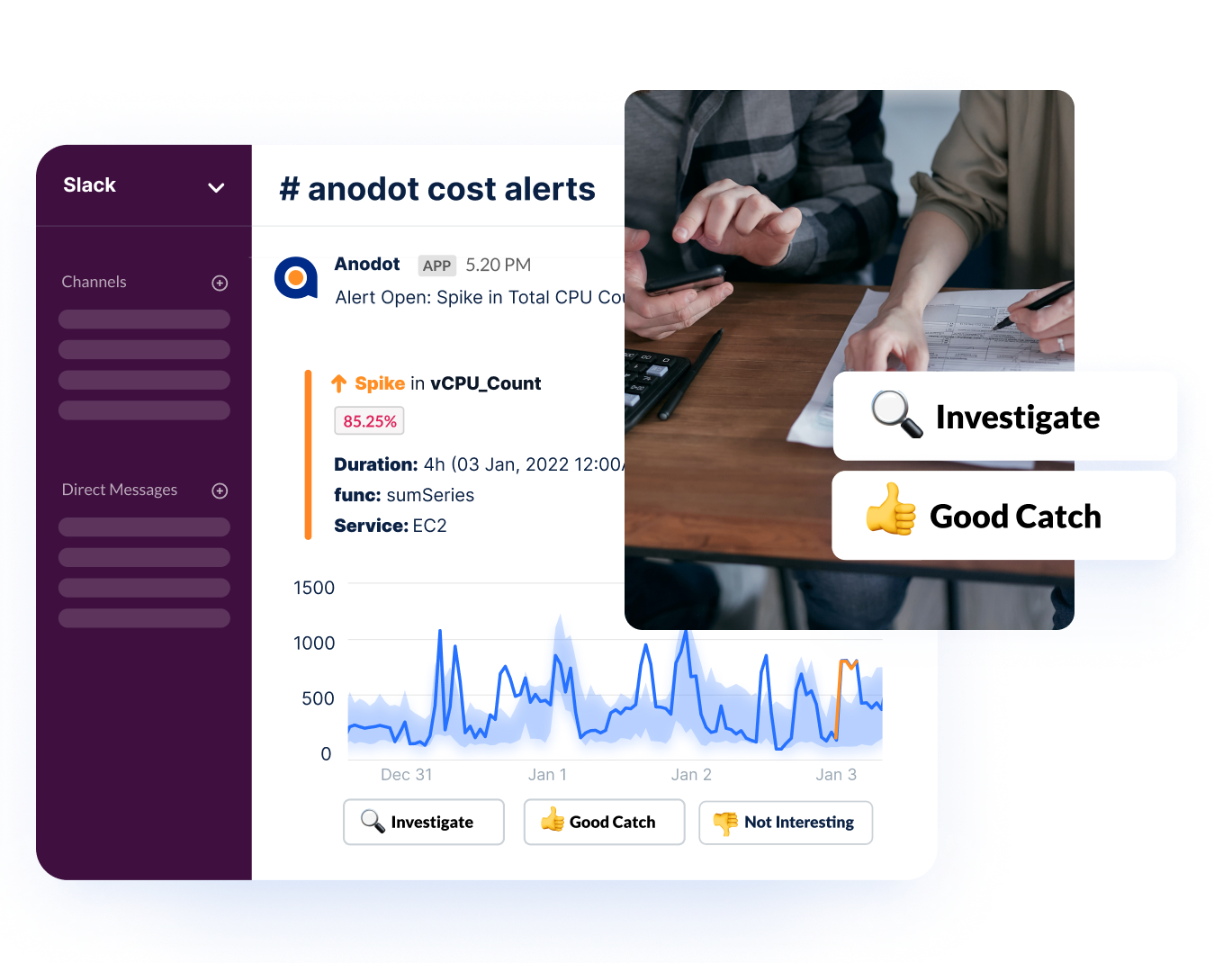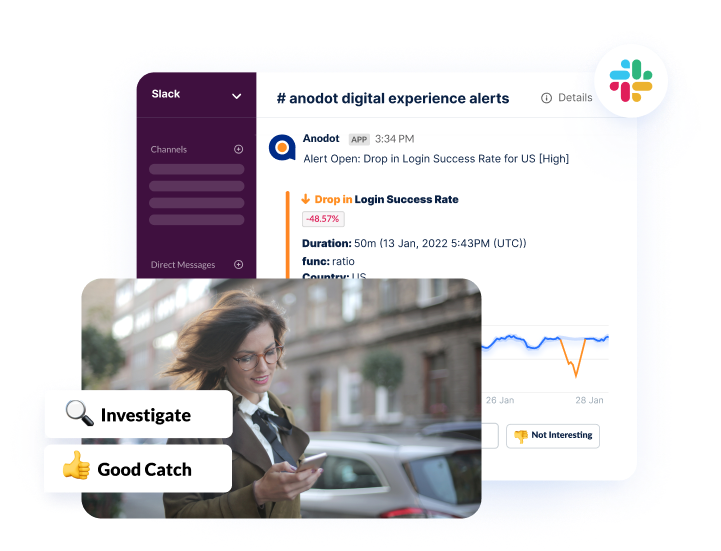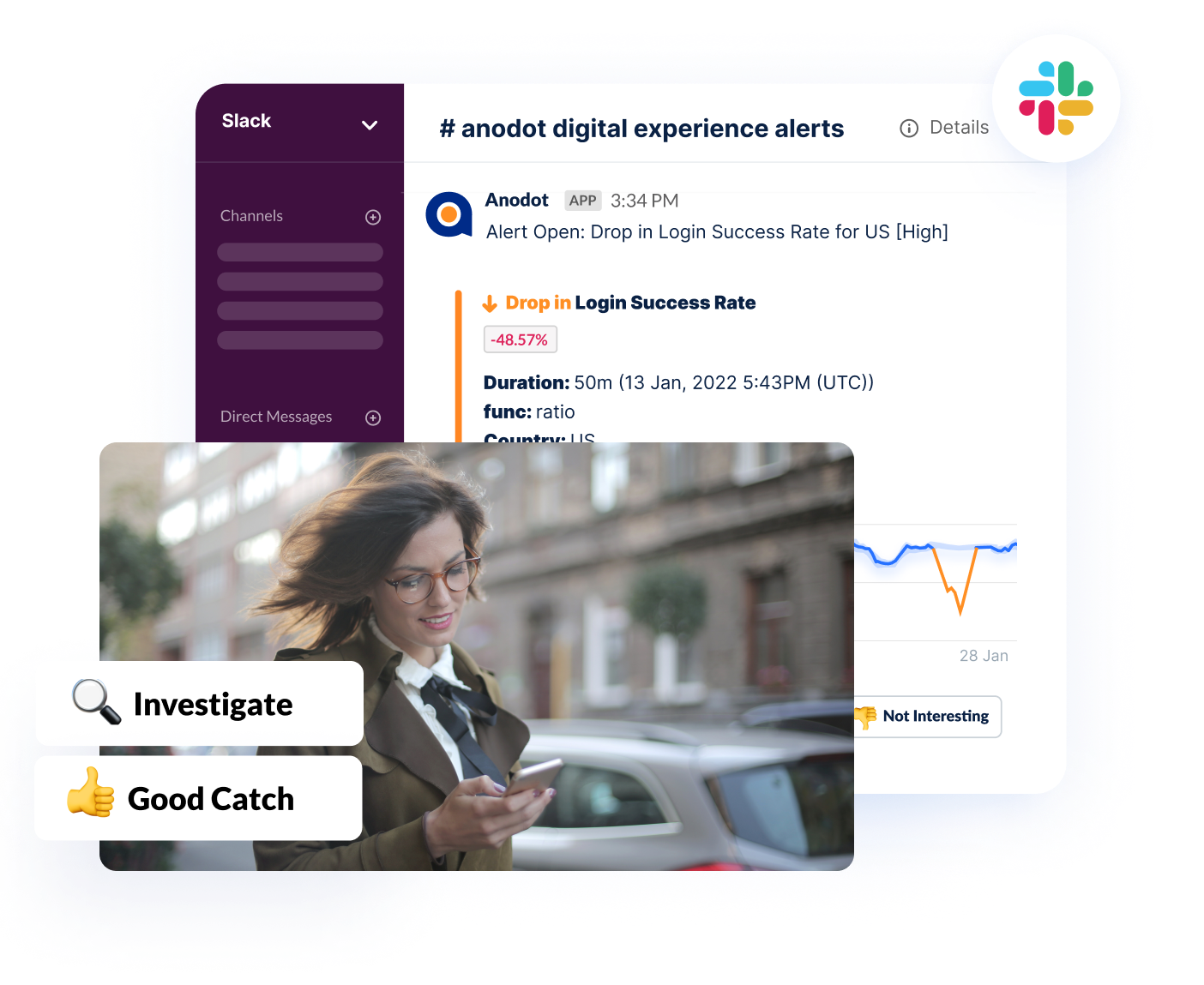There is simply too much data to analyze and not enough time, resources, and talent to make it happen. Anodot’s AI analytics can analyze 100% of the data you collect, detect anomalies and business incidents in real-time and identify their root cause, enabling you to remedy problems faster and capture opportunities sooner.
Monitoring that
understands your business
You’re missing out on 85% of your data
Anomaly Detection + Action
Know first.
Resolve
instantly.
Drop in Transaction Success Rate for Authorize.net critical
Identify and resolve incidents before they impact your customers, revenue, or costs with Anodot’s patented monitoring technology. Get the full context of what is happening and easily initiate automated actions for the fastest time to resolution.
Drop in Transaction Success Rate for Authorize.net critical
Why
enterprises
love
Anodot
Real time, actionable alerts you need to know about right now
Completely autonomous learning, monitoring and correlations
Easy integration to any data source in your stack
Fastest time to value – up and running in days, not months
CUSTOMER STORY

Capture incidents before they impact customers
“Anodot allows us to capture incidents sometimes an hour or two before they actually created a customer experience impact. We’re using this, as we modernize our network, to get more sophistication and to also take complexities away from our operations people.”

Featured resources


A Guide to Autonomous Monetization Monitoring for the Gaming Industry










